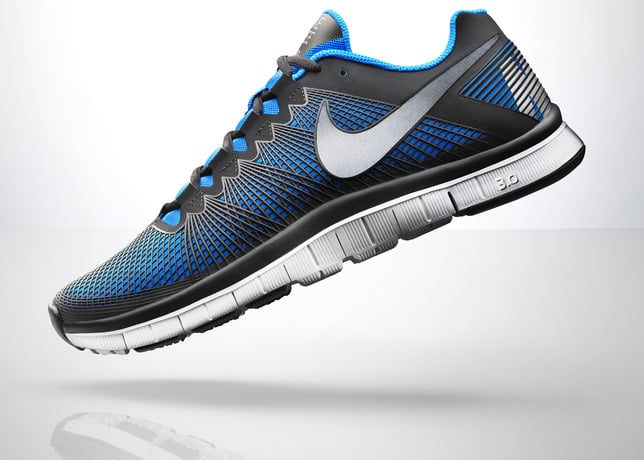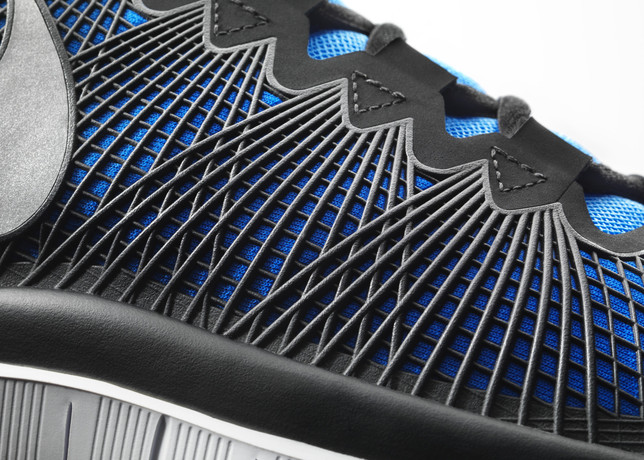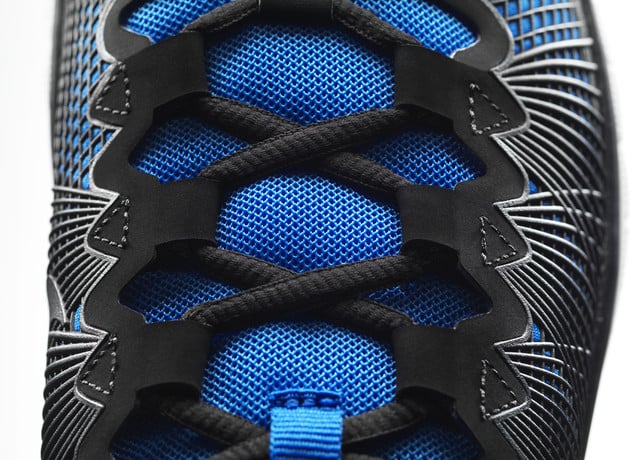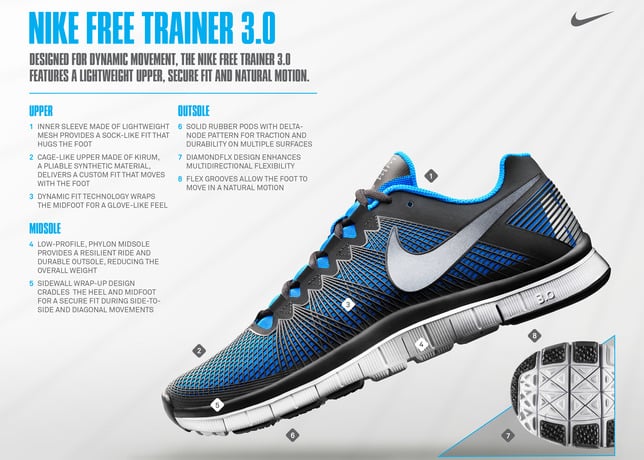
Ahead of next year’s debut, Nike has unveiled its upcoming Nike Free Trainer 3.0.
For more than 20 years, Nike has paved the way in training with products designed for elite athletic performance. In January 2013, the Nike Free Trainer 3.0 will debut as the brand’s most advanced training shoe, fusing minimalism with stability and comfort.
The original Nike Air Trainer 1 shoe launched in 1987, introducing Nike Air technology for responsive heel cushioning and a forefoot strap for a lockdown fit. Debuting on Bo Jackson, a phenom athlete who combined strength, speed and off-the-charts athleticism, the Nike Air Trainer 1 was designed to the exact specifications of multi-sport athletes. Versatility was key.
Today, Nike Training has evolved into a sophisticated blend of advanced footwear and apparel technologies for athletes worldwide to compete at their peak. The focus: zero distractions, lightweight, breathable, and working in harmony with the natural motion of the body.
With fabrications, innovations, and athlete insight, Nike’s training footwear has transformed for the future. The Nike Free Trainer 3.0 is designed for elite athletes at the forefront of multi-sport training. Weighing in at 9 ounces (men’s size 9), the shoe features a Dynamic Fit system that cradles the midfoot, conforming to each athlete’s foot while providing superior lockdown during training.
“With advanced materials and articulated design, we’re able to dramatically reduce the weight and increase the flexibility of the Nike Free Trainer 3.0 without compromising strength,” said Laura Parrett, Nike Training footwear designer.
The Nike Free Trainer 3.0 blends innovative materials in the upper with the flexibility and benefits of Nike Free for increased natural motion. The mesh upper is designed with enforced polyurethane support, in the form of strand-like lines that increase and decrease with size over the shoe creating a pattern that is extremely supportive yet keeps the shoe flexible, lightweight, and breathable. The material protects against abrasion yet retains its pliability, providing a second skin-like feel as it moves with the natural biomechanics of the foot.
The midsole is another tangible example of Nike’s progression in training footwear. The Phylon midsole provides lightweight, responsive cushioning. This shoe is a 3.0 on the Nike Free rating scale, which means it offers great multidirectional flexibility and a low-to-the-ground fit and feel for a barefoot-like training experience.
The training athlete’s demands were chronicled in a recent documentary on Bo Jackson, the forefather of Nike Training. Nike will always design and engineer product with the athlete’s needs paramount. With the evolution in training methods, drills and skills, Nike has evolved its footwear benefits.
The Nike Free Trainer 3.0 will be available globally in multiple colors beginning January 1, 2013.



